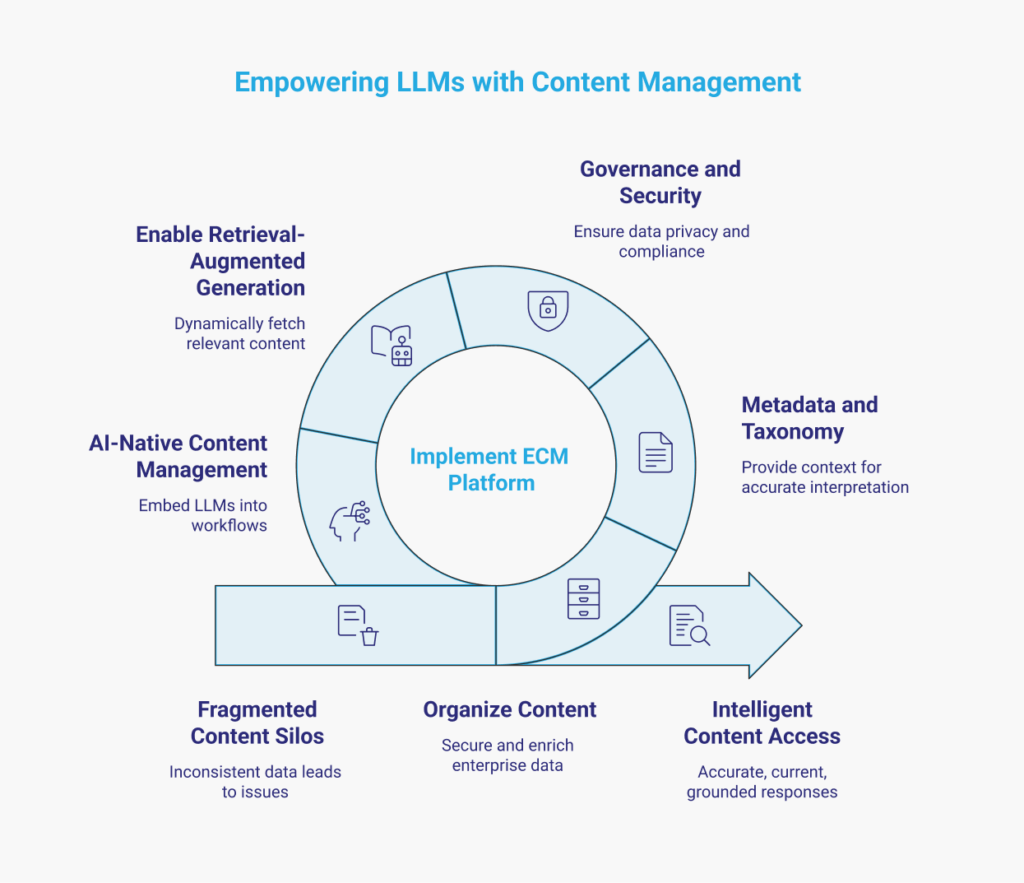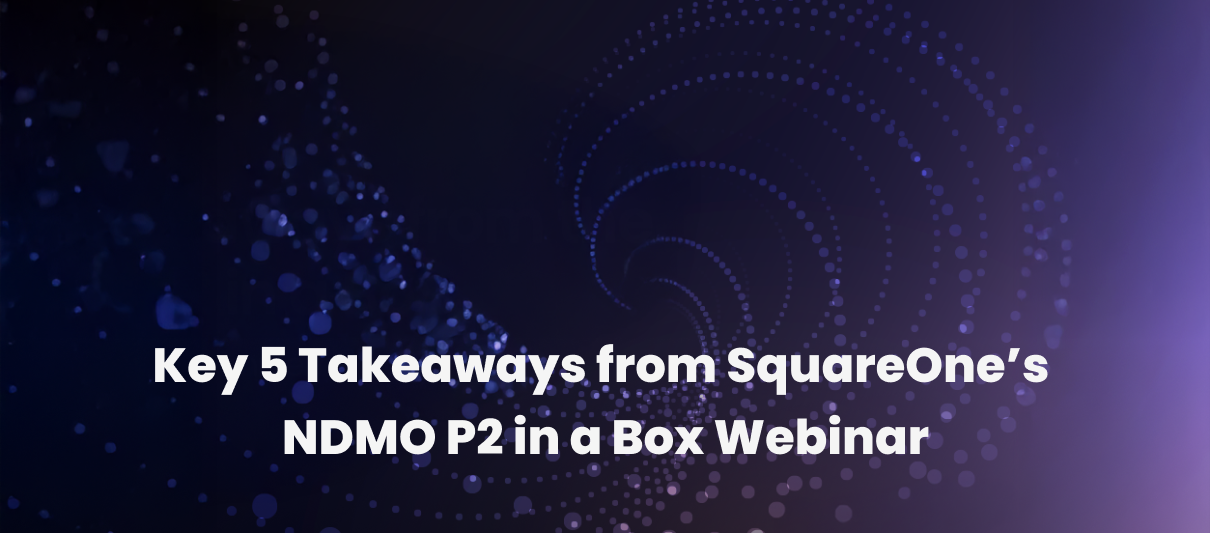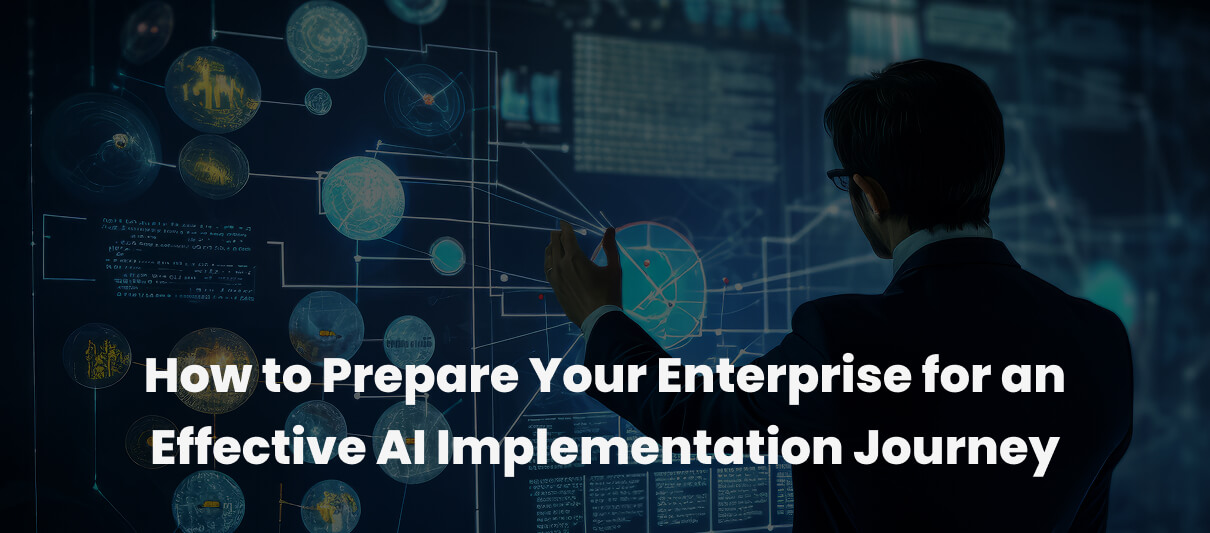5 Key Roles Content Management Plays in Large Language Models (LLMs) Efficacy
It’s an oft-quoted phrase these days; that Content is King. In today’s blog, we explore the full import of this phrase where Large Language Models (LLMs) are concerned and how artificial intelligence-powered content is helping LLMs transform the way organizations function.
That it’s an AI-driven landscape organizations operate in today is a fact. One that’s prompting organizations to race towards unlocking the full potential of LLMs to transform the way they work, communicate, and make decisions. However, the success of any LLM initiative depends on one fundamental element — Content.
Content is the fuel that powers every LLM – whether the goal is to create intelligent chatbots, automate document understanding, or extract insights from massive repositories. The quality, organization, and accessibility of enterprise content determine how effective and trustworthy an AI system will be.
Here’s where Enterprise Content Management (ECM) becomes a critical enabler

1. LLMs Are Only as Smart as the Content They Access
LLMs such as GPT, Claude, or enterprise-specific models rely heavily on the data they are trained or fine-tuned on. For enterprises, this data resides across content silos — emails, policies, contracts, invoices, videos, and more.
Without a robust content management strategy, this information remains fragmented and inconsistent, leading to:
- Poor contextual understanding by AI systems
- Security risks from uncontrolled access
- Low-quality outputs due to outdated or duplicate information
An effective ECM platform — like Hyland OnBase, Aflresco, Nuxeo or Content Innovation Cloud — acts as the foundation for organizing, securing, and enriching this content so that LLMs can retrieve and reason over it effectively.
2. Metadata and Taxonomy Power Contextual Intelligence
LLMs need context to interpret meaning accurately. Content management systems provide that context through structured metadata, taxonomies, and classification frameworks.
When every document, image, or email is tagged with consistent metadata (for example: customer name, case number, or document type), the LLM can:
- Generate precise responses
- Retrieve relevant content faster
- Maintain contextual continuity across interactions
Think of metadata as the “language” your LLM speaks fluently — the bridge between raw content and actionable knowledge.
3. Governance and Security Are Non-Negotiable
One of the biggest challenges in AI adoption is ensuring data privacy and governance. LLMs must not access restricted or confidential content without proper authorization.
Modern content management platforms enable:
- Role-based access control
- Document redaction and encryption
- Audit trails for AI queries and data retrieval
This ensures that when LLMs are integrated into enterprise workflows, they operate within strict compliance boundaries — essential for industries like banking, insurance, healthcare, and government.
4. Content Management Enables Retrieval-Augmented Generation (RAG)
A key evolution in AI architecture is Retrieval-Augmented Generation (RAG) where LLMs don’t rely solely on pre-training, but dynamically fetch relevant content from enterprise repositories.
For RAG to work, the enterprise must have:
- Clean, indexed, and searchable repositories (handled by ECM)
- APIs or connectors to access real-time documents
- Embedded AI capabilities like OCR, NLP tagging, and auto-summarization
By connecting ECM systems with LLMs via RAG pipelines, enterprises ensure that the model’s responses are accurate, current, and grounded in organizational truth.
5. The Future: AI-Native Content Management
We are now entering an era where content management and AI are converging. Next-generation ECM systems are becoming AI-native, embedding LLMs directly into their workflows to enable:
- Intelligent search and summarization
- Auto-classification and tagging
- Insight extraction from unstructured data
- Conversational interfaces for enterprise content
Soon, interacting with your organization’s knowledge base won’t involve navigating folders or running queries — you’ll simply ask a question, and your AI-enabled ECM will find, interpret, and summarize the right content instantly.
In Conclusion
Content management is no longer just about storage and retrieval — it’s about readiness for intelligence.
Enterprises that invest in structured, governed, and AI-integrated content ecosystems will have a significant advantage in harnessing LLMs effectively.
In the age of generative AI, therefore, your content is your competitive edge — and managing it smartly is the first step toward building trustworthy, high-performing AI solutions.
Where are you on your AI-powered enterprise content management journey? For answers, interventions, and favourable outcomes, reach out to us at SquareOne Technologies today!
















